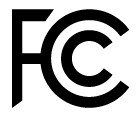Compliance notices
Type approval
Type approval, or acceptance, covers technical parameters of the equipment related to emissions that can cause interference. Type approval is granted to the manufacturer of the transmission equipment, independent from the operation or licensing of the units. Some countries have unique technical requirements for operation in particular radio-modem frequency bands. To comply with those requirements, Trimble may have modified your equipment to be granted type approval.
Unauthorized modification of the units voids the type approval, the warranty, and the operational license of the equipment.
Regulations and safety
The TDL450B radio requires a license for use. For licensing information, consult your local Trimble dealer.
It is the responsibility of the end user to obtain an operator’s permit or license for the location or country of use.
Regulatory compliance
The TDL450B radio complies with the following regulations:
-
EN 300 113 (RF-requirements)
-
EN 301 489 (EMC-requirements)
-
EN 62368-1 (Safety Standard)
-
FCC CFR47 Part 90 (Private Land Mobile Radio Service)
-
Regulatory model number: 129681
The TDL450B radio is allowed to be used in the following countries, either on license-free channels or on channels where the operation requires a license. More detailed information is available at the local frequency management authority:
Countries: AT, AU, BE, BG, CA, CH, CY, CZ, DE, DK, EE, ES, FI, FR, GB, GR, HU, IE, IS, IT, LT, LU, LV, MT, NL, NO, PL, PT, RO, RU, SE, SK, UK (NI), and US.
Canada
Under Industry Canada regulations, this radio transmitter may only operate using an antenna of a type and maximum (or lesser) gain approved for the transmitter by Industry Canada. To reduce potential radio interference to other users, the antenna type and its gain should be chosen so that the equivalent isotropically radiated power (EIRP) is not more than that required for successful communication.
Conformément à la réglementation d’Industrie Canada, le présent émetteur radio peut fonctionner avec une antenne d’un type et d’un gain maximal (ou inférieur) approuvé pour l’émetteur par Industrie Canada. Dans le but de réduire les risques de brouillage radioélectrique à l’intention des autres utilisateurs, il faut choisir le type d’antenne et son gain de sorte que la puissance isotrope rayonnée équivalente (PIRE) ne dépasse pas l’intensité nécessaire à l’établissement d’une communication satisfaisante.
This Class B digital apparatus complies with Canadian ICES-003.
Cet appareil numérique de la classe B est conforme à la norme NMB-003 du Canada.
This apparatus complies with Canadian RSS-GEN, RS‑102.
Cet appareil est conforme à la norme CNR-GEN, CNR‑102 du Canada.
Mexico
INFORMACIÓN PARA MÉXICO IFT (México): La operación de este equipo esta sujeta a las siguientes dos condiciones: (1) es posible que este equipo o dispositivo no cause interferencia perjudicial y (2) este equipo o dispositivo debe aceptar cualquier interferencia, incluyendo la que pueda causar su operación no deseada.
USA

The Federal Communications Commission (FCC, USA) has dictated that on 1 January 2013, all radio users transmitting data between s/b 421 and 512 MHz within the United States of America, must operate within 12.5 kHz channels or transmit using the bits per second (bps) settings of 19200 bps when using a 25 kHz channel. For more information on the FCC mandate, please go to www.fcc.gov/narrowbanding-overview.
FCC compliance statement
Regulatory model number: 129681
FCC Class B - Notice to Users. This device complies with part 15 of the FCC rules.
RESPONSIBLE PARTY:
Trimble Inc.
4450 Gibson Drive
Tipp City, Ohio 45371
USA
trimble.com/en/our-company/about/contact-information
This device complies with part 15 of the FCC rules. Operation is subject to the following two conditions:
(1) This device may not cause harmful interference, and (2) this device must accept any interference received, including interference that may cause undesired operation.
Changes or modifications made to this equipment not expressly approved by Trimble may void the FCC authorization to operate this equipment.
|
WARNING Users of radio modems in North America should be aware, that due to the allocation of the frequency band 406.0 - 406.1 MHz for government use only, the use of radio modem on this frequency band without a proper permit is strictly forbidden. In USA and Canada this product is certified to use frequencies 406.1 - 430 MHz and 450 - 470 MHz. Using this device in USA or Canada outside these frequencies is prohibited. |
This device complies with part 15 of the FCC rules. Operation is subject to the following two conditions:
(1) This device may not cause harmful interference, and (2) this device must accept any interference received, including interference that may cause undesired operation.
This equipment has been tested and found to comply with the limits for a Class B digital device, pursuant to part 15 of the FCC Rules. These limits are designed to provide reasonable protection against harmful interference in a residential installation. This equipment generates, uses and can radiate radio frequency energy and, if not installed and used in accordance with the instructions, may cause harmful interference to radio communications. However, there is no guarantee that interference will not occur in a particular installation. If this equipment does cause harmful interference to radio or television reception, which can be determined by turning the equipment off and on, the user is encouraged to try to correct the interference by one or more of the following measures:
-
Reorient or relocate the receiving antenna.
-
Increase the separation between the equipment and receiver.
-
Connect the equipment into an outlet on a circuit different from that to which the receiver is connected. Consult the dealer or an experienced radio / TV technician for help.